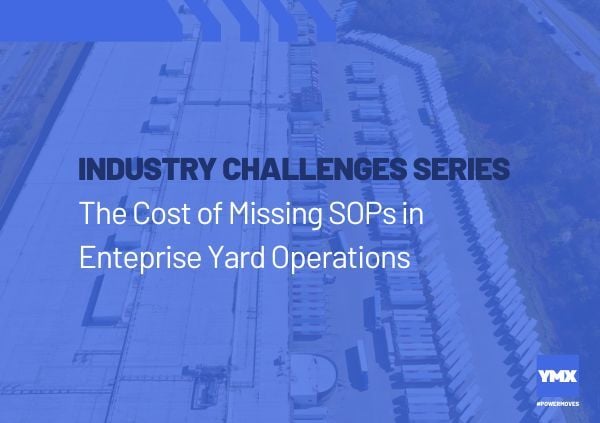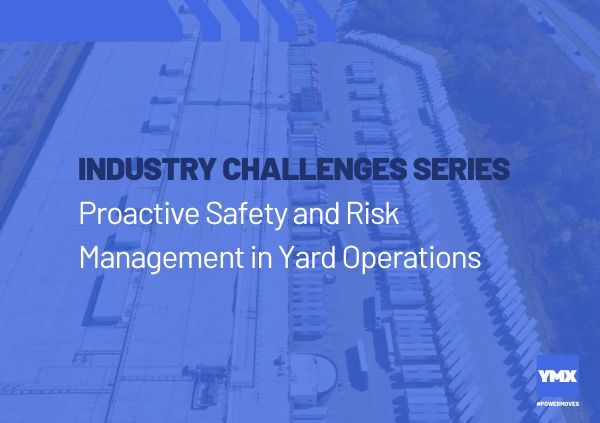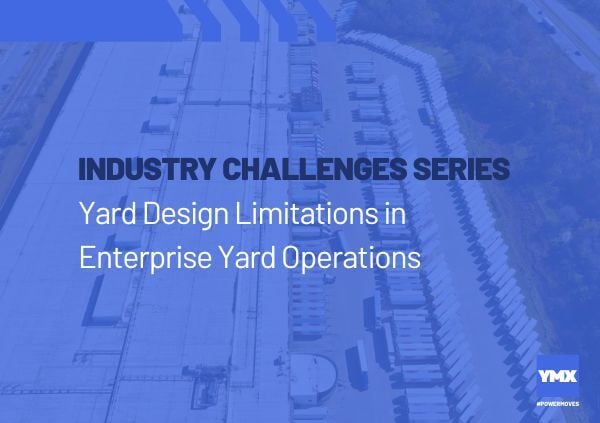In many yard operations, standard operating procedures (SOPs) fall short – or are nonexistent. There’s no documented playbook. No consistent process. No clarity on what should happen or who is responsible. Everyone is winging it, and that’s an issue.
Without standardized SOPs, performance is difficult to manage and inconsistent.
The Red Flag: Standardized SOPs Are Rare in Enterprise Yard Operations
Legacy service providers aren’t built to scale, leading to the following within the yard:
- No formal scope of work beyond “move the trailers”
- No documentation for how tasks are performed, prioritized, or measured
- No protocols for how teams respond to urgent situations, exceptions, or disruptions
- No playbook or system for continuous feedback or process evolution
The Consequences of Having Few or No Standardized Yard Ops SOPs
Without SOPs in yard operations, enterprise yards are likely to experience:
- Inconsistent execution across sites: One shift handles trailer moves one way. The next site does it completely differently.
- Poor handoffs and miscommunication: No alignment between the yard, warehouse, carriers, or the gate.
- Delayed responses to exceptions or prioritization changes: Severe weather hits? Surge in trailer volume? A trailer with cold inventory arrives early? No one’s sure what to do or who to notify.
- Zero accountability: When there isn’t a documented process, there’s nothing to measure against. No one is held accountable for the shortcomings the site is experiencing.
For enterprise yard operations managing dozens or hundreds of sites, this chaos compounds fast.
Real-World Scenario
Picture this... A heavy snow rolls in overnight and the morning team walks in to find trailers that are backlogged, lanes are blocked by ice, and assets aren't starting due to the extremely cold temperatures.
There was not a pre-storm communication plan. No weather-specific SOP. No documented protocol for triaging dock priorities or coordinating with warehouse leads. By the time decisions are made, carriers are waiting, SLAs are missed, and operations are behind for the next 48 hours.
What truly went wrong in this scenario? Spoiler alert: It wasn’t the bad weather. It was the lack of a playbook.
Strong Yard SOPs Are Designed to Improve Sites
We believe standardization is non-negotiable for the sake of clarity, accountability, and performance. SOPs should be:
- Actionable: Clearly outlines roles, triggers, and steps any shift can follow at any site.
- Scalable: Designed to be implemented across sites most of the time, with little need to reinvent the wheel.
- Resilient: Adaptable to real-world problems that arise, like labor shortages, weather events, or peak season spikes.
- Integrated: Incorporated into daily workflows via a yard operating system (like YMX OS) and not lost in a binder.
Yard SOPs That Drive Operational Excellence
A strong SOP isn’t just a check-the-box item. It’s a blueprint for performance in yard operations. The following are examples of yard SOPs to consider: - Yard Congestion: A pre-shift yard check is a standardized proactive practice, backed by real-time trailer status updates and GPS tracking in place.
- Labor Contingency: Minimum staffing thresholds are based on volume forecasts, with an emergency coverage plan for call-offs or no shows.
- Yard Numbering: For yards with no markings, the yard is striped and numbered to improve trailer assignment and move accuracy.
- Yard Map: A site-specific digital map is created and includes every lane and dock.
Each SOP should be customized to your site’s needs, and designed for better visibility, onboarding, and consistency.
If your legacy service provider isn’t working from a SOP playbook, they’re underperforming and creating risk. They’re not just behind. They’re a liability.
At YMX, we don’t just execute. We document. We standardize. We build resilient operations that are ready for today and built for what’s next. Learn more.




%20(10).jpeg)
